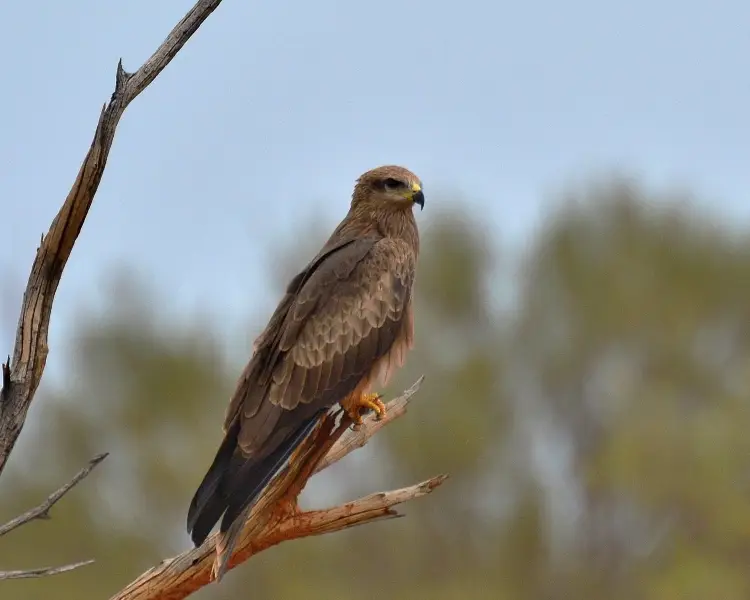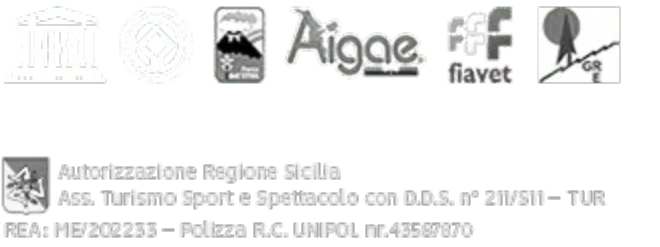Starting in the second half of March and continuing throughout April and part of May, Sicily experiences the phenomenon of spring bird migration.
After spending the winter in Africa, where they have fed abundantly, hundreds of thousands of birds embark on the long journey to their European destinations, where they will nest and raise their young for the first few months.
There are three main migratory routes that most birds and birds of prey follow, crossing the shortest stretches of sea to take full advantage of the earth’s updrafts.
The westernmost route in the Mediterranean is the Strait of Gibraltar. The second route, to the east, goes up from the Red Sea towards Israel, Turkey, and the Bosphorus; and the third migratory route, in the center of the Mediterranean, is the one that concerns us directly: Libya, Tunisia, the Strait of Sicily, Sicily, the Strait of Messina, and the Italian Peninsula.
Places of migration in Sicily
The places where this spring migration can be observed in Sicily are initially the Egadi Islands, together with the Pelagie Islands and Malta. Once they reach the southern coast in the Agrigento and Ragusa areas, the birds fly up along the eastern or northern coast, crossing the great mountain ranges of the Sicani, Erei, Madonie, and Peloritani mountains. Quite a few species cut across to the Aeolian Islands, bypassing the northeastern tip of Sicily.
In the eastern part of the island, numerous individuals are attracted by the immense bulk of Mount Etna, which draws them to it like a giant beacon. They then head towards the great volcano.
The Etna area, mainly to the southeast and northwest, is particularly affected by these large migratory flows during the spring.
In fact, after reaching the Plain of Catania and the Simeto Valley, the birds head north-northeast towards the Valle del Bove Valley (eastern slope of Etna), often reaching an altitude of 2,000 meters and even higher. Those flying over the Simeto at Adrano, Bronte, and Randazzo will continue towards the Alcantara Valley until they reach the southern slopes of the Peloritani Mountains.
A significant part of this migration will affect the middle-upper area of the western slope of Etna, heading north towards Piano Provenzana, towards the Linguaglossa Pine Forest, or towards the Sapienza Refuge, flying over the municipalities of Zafferana Etnea, Milo, and Sant’Alfio, or even crossing the Valle del Bove Valley rims.
They will head towards Montagna Grande, towards Monte Venere, crossing the territory of Taormina and Vallone Sant’Antonio to continue further north towards the Strait of Messina and Italy, which they will climb up to Scandinavia.
The best areas for birdwatching on Etna
In my fifty years of working on Etna, the places where I have most frequently been able to observe certain species of migratory birds of prey are Monte Zoccolaro, Schiena dell’Asino, Montagnola, and the northern and western ridges of the Valle del Bove up to Torre del Filosofo on the eastern and southern slopes.
On the southwestern side of Etna, other places have proved to be excellent observation points, such as the high mountain forest track from Serra La Nave to Monte Spagnolo. On the northern side, frequent sightings have been made in the areas of Timpa Rossa, Monte Nero, and the fracture caused by the 2002 eruption. Equally suitable for birdwatching are the Mare-neve road, the Sartorius Craters, the trails starting from Piano Provenzana, as the upper limit, and the Simeto and Alcantara rivers and their respective reservoirs, as the lower limit.
The most common bird species on Mount Etna
The most commonly observed birds of prey are the black kite, Milvus migrans, with its characteristic forked tail. The marsh harrier, Circus aeruginosus, both male and female. A species with unmistakable coloring, they often fly above the secondary craters, flapping their wings at a regular rhythm. The honey buzzard, Pernis apivorus, is the star of the show due to its unrivalled numbers during spring migration in Sicily. It is not uncommon to see the beautiful and elegant Montagu’s harrier, Circus macrorous, and the lesser kestrel, Circus pygargus, whose sexual dimorphism is evident in their different plumage colors.

The Booted Eagle, Hieraaetus pennatus, is now at home in Sicily. It often winters in our area and also migrates over Etna.
I have rarely been able to spot large eagles or vultures migrating over Etna, and the pairs of golden eagles Aquila crysaetos nesting on our volcano are sedentary, observable all year round as in other parts of the island.
However, a few short-toed eagles (Circaetus gallicus) have flown over the lower slopes of the volcano during spring migration, as have lesser spotted eagles (Aquila pomarina) during autumn migration. Therefore, these are accipitrids that can only occasionally be spotted on Mount Etna.
Many falcons also migrate from Etna, the most common of which is the Kestrel, Falco tinnunculus. There is also the Red-footed Falcon, Falco vespertinus. More rarely, I have spotted the Hobby, Falco subbuteo, which is easily confused with other species of falcons.
Other falcons spotted migrating on Mount Etna are the peregrine falcon (Falco peregrinus), the saker falcon (Falco cherrug), and the sparrowhawk (Accipiter nisus).
Obviously, there are many other species of birds that fly over Etna during their migration to the African continent, such as ducks, storks, and cranes. Flocks of bee-eaters (Merops apiaster) also migrate in spring, easily distinguishable by their vivid plumage, long curved beaks, and deafening call, which can be heard even from a distance.
In addition to the specific theme of autumn bird migration, Etna is also rich in species of resident birds, i.e., birds that live in the same place. The aforementioned golden eagle is certainly the most beautiful and extraordinary species to observe, both for its size and wingspan of over 2.00 m-2.30 m and for the majesty of its flight. The buzzard and kestrel are very common. A little more difficult to observe are the peregrine falcon, sparrowhawk, and other small falcons.
It is not uncommon to see robins, hoopoes, white wagtails, coal tits, willow tits, serins, and blue rock thrushes with their beautiful blue plumage. The nuthatch, jay, gray heron, little egret, and great egret are also present. More rarely, the beautiful crossbill with its crossed beak or the great spotted woodpecker, always busy digging into tree trunks, can be seen! The rock partridge is also present on Etna, although it is not easy to spot, as is the adult male golden oriole with its beautiful yellow and black plumage or the nightjar, whose plumage is easily confused with the surrounding vegetation, making it difficult to spot.
Nocturnal birds of prey can be heard but also seen, such as the barn owl, tawny owl, little owl, long-eared owl, and scops owl.
Our volcano therefore offers a series of rare opportunities for birdwatching in an exceptional environment where the natural landscape created by volcanic eruptions is combined with the observation of falcons, hawks, owls, herons, passerines, pigeons, storks, and many other species.
The migratory cycle comes to an end
These beautiful animals, returning to migratory birds, will make a very long and exhausting journey to reach their nesting site, in welcoming environments and, above all, with an abundance of food. Well rested and fed, they will return to Africa next fall.
And once again, as they have done since time immemorial, they will resume their long journey, flying south over Italy. Some will head towards Stromboli, preferring the route of the Aeolian Islands.
Others, seeing the smoking peak of Mount Etna, will let themselves be guided by the great volcano until they reach western Sicily, the Egadi Islands, and the Strait of Sicily to spend the winter in sub-Saharan Africa.
This is often a long and stressful journey that sometimes ends tragically for some young or older individuals who are at the limit of their strength.
It is therefore our duty to help maintain favorable conditions for the transit of these wonderful animals, respecting the right distance so as not to frighten them and altering the natural elements of our territory as little as possible.



